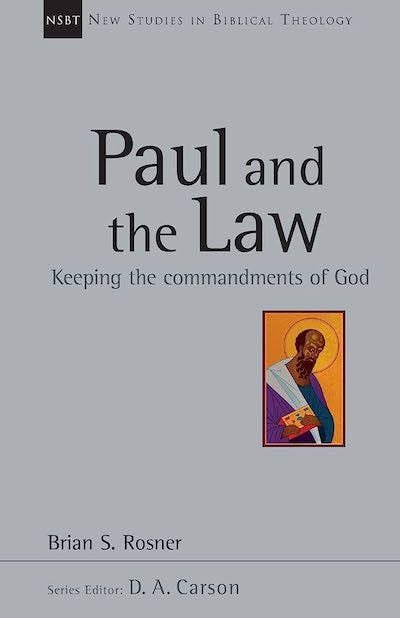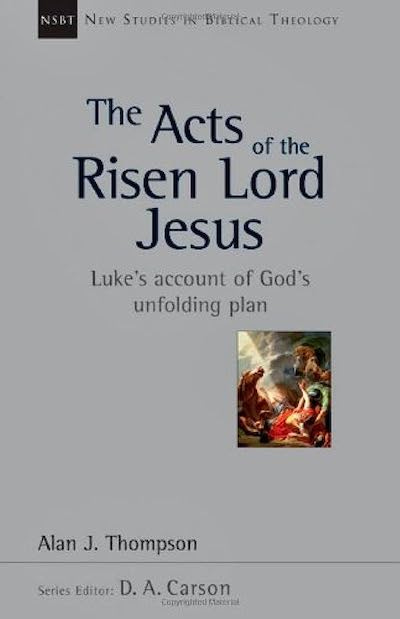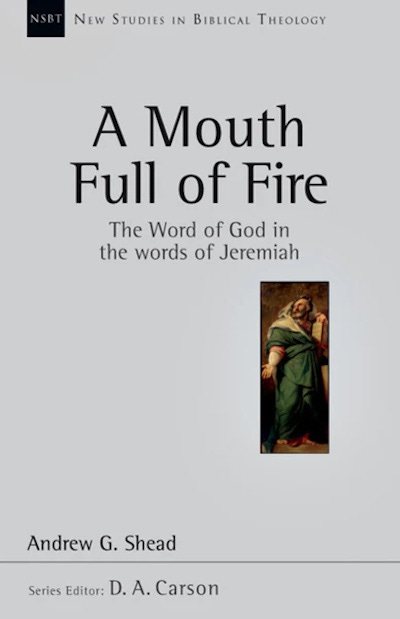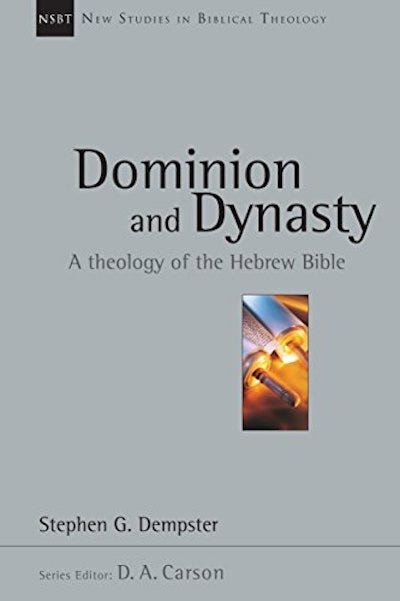My Top 5 NSBT Volumes
One of the most reliable biblical theology resources today is the New Studies in Biblical Theology (NSBT) published with IVP and edited by Don Carson. This series began in 1995 with David Peterson’s work on Sanctification and Holiness and now has 60+ titles. One of the practical effects of a long-standing series like this is that it invariably shapes what people understand the discipline of biblical theology to be.
The series preface that begins each volume specifies three types of studies that it publishes:
(1) the nature and status of biblical theology, including its relations with other disciplines (e.g. historical theology, exegesis, systematic theology, historical criticism, narrative theology); (2) the articulation and exposition of the structure of thought of a particular biblical writer or corpus; and (3) the delineation of a biblical theme across all or part of the biblical corpora.
This tracks with Carson’s basic understanding of the discipline of BT: “BT answers the question, How has God revealed his word historically and organically? BT studies the theology of individual biblical books (e.g., Isaiah, the Gospel of John), of select collections within the Bible (e.g., the Pentateuch, wisdom literature, the Gospels, Paul’s letters, John’s writings), and then traces out themes as they develop across time within the canon (e.g., the way in which the theme of the temple develops, in several directions, to fill out a “whole Bible” theology of the temple” (“The Bible and Theology,” in The BT Study Bible).
Here are my personal favorites from this excellent series.
5. Brian Rosner, Paul and the Law: Keeping the Commandments of God (2013)
Any discussion of the apostle Paul’s use of the “law” is fraught with difficult texts, a host of exegetical horizons, and a long history of interpretation to wade through. Central to these is the meaning of terms: “law” can mean the Pentateuch (as in the Law, the Prophets, and the Writings), the mosaic covenant (the “law of Moses”), a specific legal stipulation (the “laws”), or more broadly the demands of righteous living. In Paul’s letters, there are both very positive statements about “the law” and also very negative ones. Rosner navigates this hermeneutical puzzle and provides a framework for accounting for this definitional plurality and dynamic tension. For Rosner, Paul explicitly and implicitly repudiates the law as a binding law-covenant, he shows that the law is replaced by the “law of Christ,” but also that new covenant believers are to reappropriate the law as both prophecy and wisdom. This over-simplified summary doesn’t do justice to Rosner’s nuanced argument but gives the gist of what is a refreshingly clear roadmap through the sometimes rocky terrain of Pauline literature and its attendant scholarly industrial complex.
4. Alan Thompson, Acts of the Risen Lord Jesus: Luke’s Account of God’s Unfolding Plan (2011)
The great value of this volume is the biblical-theological framework it provides for the interpretation of the many historical and theological features of the book of Acts. Thompson exemplifies one of the strengths of biblical theology as a discipline: he shows the way that this particular book continues the narrative storyline of redemptive history and the working out of God’s promises in its own distinctive way. In Thompson’s estimation, Acts narrates the “continuing story of God’s saving purposes” through allusion to OT promises and in light of the continuing reign of the resurrected Christ. The “inaugurated kingdom of God” is the framework in which the many themes of Acts can be best understood (e.g., the resurrection and ascension, the gift of the Spirit, the gentile mission, the function of Jewish institutions, etc). The simple adjustments that Thompson suggests in his biblical-theological framework are at once easily perceived and profoundly influential.
3. Andrew Shead, Mouth Full of Fire: The Word of God in the Words of Jeremiah (2012)
Discerning the message of Jeremiah as a whole is difficult because of the book’s scope and the complexity of its textual shape. Shead gives a theological reading of Jeremiah by focusing on a theme that is also central to the book itself: divine discourse. In particular, Shead traces the theological relationship between the “Word of the Lord,” the words of the prophet, and the shape of the prophetic book. The strategic contribution here is also that Shead develops these themes by showing that the book itself develops these particular thematic trajectories through distinct structural and textual features. In this vein, too, Shead concludes with a dogmatic reflection on the doctrine of revelation and Scripture in light of the meaning of Jeremiah. Quite a feat!
2. Michael Morales, Who Shall Ascend the Mountain of the Lord? A Biblical Theology of the Book of Leviticus (2015)
Morales argues for the central function of the book of Leviticus within the scope of the Pentateuch. He shows the way the text functions as a literary and theological entry into the heart of the Pentateuch’s purpose: the people’s presence with Yahweh. The thematic core of Leviticus addresses the central concern of the “gate liturgy”— “Who may ascend the hill of Yahweh? Who may be found in his holy place?” (Ps 24). Along the way, Morales uncovers a rich web of structural, thematic, and literary connections with Genesis–Exodus and Numbers–Deuteronomy. If you’ve never studied Leviticus in-depth before, my suggestion would be to gain a working knowledge of the book’s details (through a few full read-throughs) and then slowly read Morales’s work. It will convince you that the Bible is amazing in a biblical book that is often characterized as a total slog. You have to read this study!
1. Stephen Dempster, Dominion and Dynasty: A Theology of the Hebrew Bible (2003)
Stephen Dempster is the Gandalf of evangelical biblical theology. For many students of biblical theology, Dempster’s canonical and literary treatment of the OT was the unexpected journey that opened up the epic of the Bible’s grand storyline. Drawing on extensive prior study on how the Hebrew Bible formed, in this work he explores how it functions for readers. This is an excellent example of tracing the Bible’s storyline with careful sensitivity to both the contours of canonical collections and the depth of the theological themes developed in biblical books. Though he is able to unsheathe his microscope and magnifying glass to great effect when needed, Dempster’s gift to the churches is his deft ability to bring this textual analysis into focus within a wide-angle lens that is able to catch a glimpse of the stunning panoramic view that the Scriptures afford for readers willing to look at it long enough. Tolle lege, my dudes!
There are, of course, many other volumes in the NSBT series that could be in this list, but these are some of my personal favorites. How different is your top 5?
At any rate, one reason to carefully work through these types of books is that they can fund your theological interpretation of individual scriptural texts and train your methodological muscles for the heavy lifting of “whole Bible” theology. So, if you’ve never read these 5, then just do it! Let’s get this daily bread!







